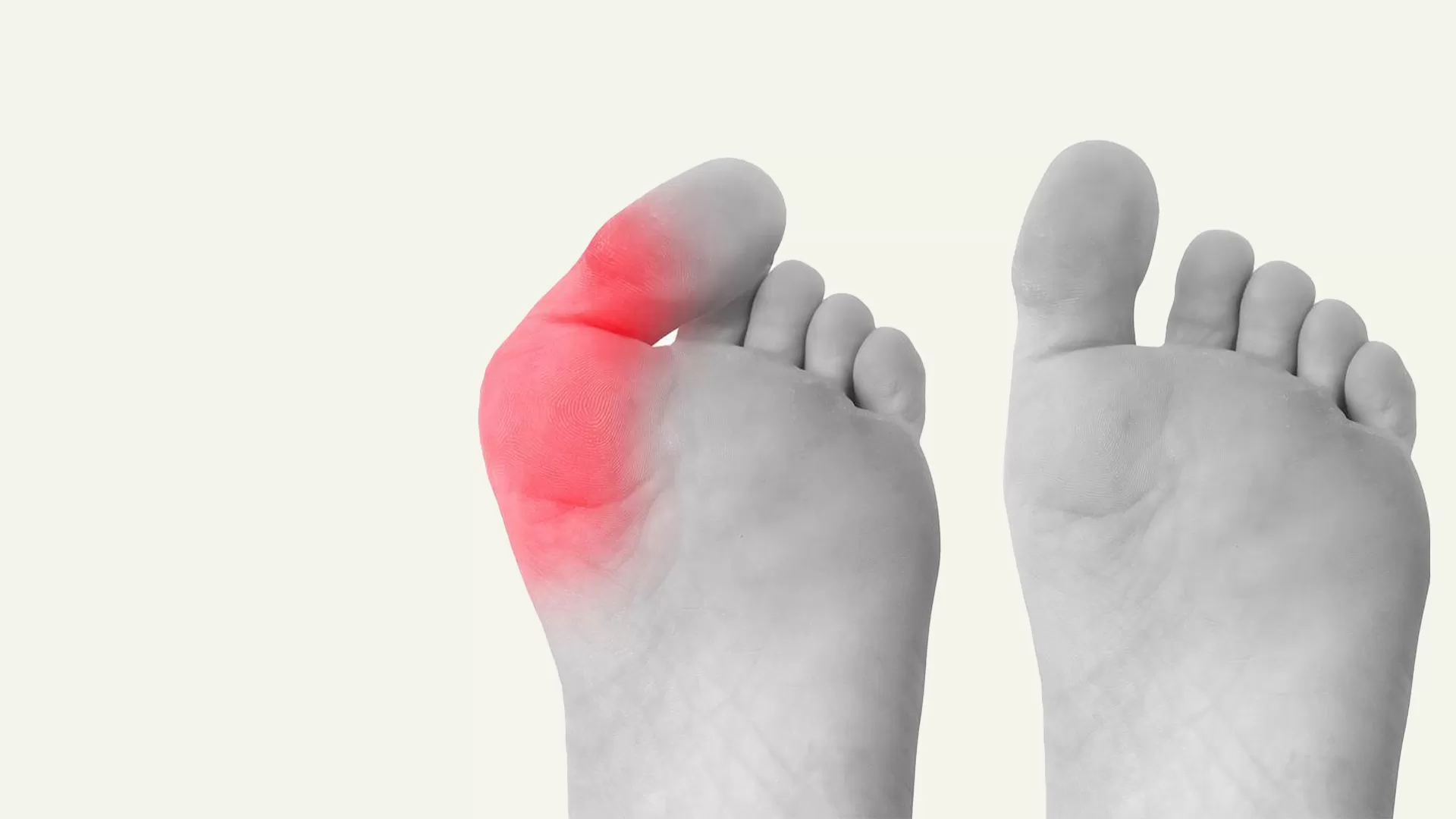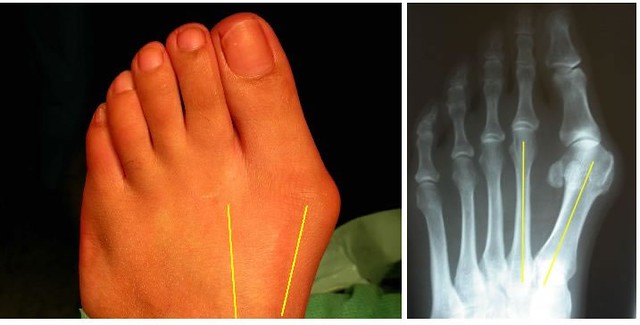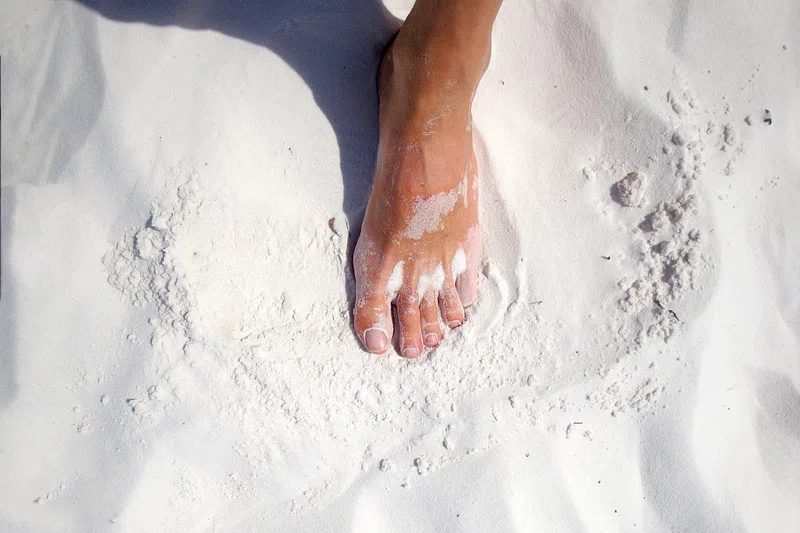Bunions, also known as hallux valgus, are one of the most common foot deformities seen by podiatrists. They affect millions of people across the United States, causing not just cosmetic concerns but also significant pain and mobility challenges. A bunion appears as a bony bump on the side of the big toe, and over time, the toe may start to angle inward, creating a visibly crooked appearance and ongoing discomfort. While conservative treatments can offer relief in many cases, there comes a time when bunion surgery becomes the most effective — and necessary — option.
At Garden State Foot & Ankle Group, with locations in Toms River and Belleville, NJ, patients receive advanced, compassionate care for bunions and a wide range of foot issues. Led by Dr. Manooj Prasad, a board-certified foot and ankle surgeon with over 20 years of experience, our clinic specializes in both non-invasive management and surgical interventions to restore comfort and mobility.
Let’s explore when bunion surgery becomes necessary and how to make the right decision for your foot health.
What Causes Bunions?
Bunions develop when the bones at the front of the foot shift out of place, causing the big toe to lean toward the smaller toes. This change in alignment creates a bump on the side of the foot, often accompanied by swelling, soreness, and restricted movement. Several factors contribute to bunion formation, including:
.
-
Genetics: A family history of bunions increases your risk. If your parents or grandparents had bunions, you might be genetically predisposed to develop them as well. Hereditary structural imbalances can make your feet more vulnerable to deformities. Regular foot screenings may help detect early signs in genetically susceptible individuals.
-
Footwear: Tight, narrow shoes or high heels can aggravate bunions. Footwear that squeezes the toes together over long periods can push the big toe out of alignment, worsening bunion development. Prolonged use of improper shoes can cause irreversible changes in foot structure. Wearing properly sized shoes with arch support is essential for prevention.
-
Foot Structure: Flat feet, low arches, and abnormal gait patterns can lead to bunions. These structural issues put uneven pressure on the foot, increasing the chance of deformity. Over time, improper mechanics wear down the joints and ligaments. Custom orthotics can help manage this pressure and slow bunion progression.
-
Arthritis: Inflammatory joint conditions like rheumatoid arthritis may also lead to bunions. Chronic inflammation in the joints weakens surrounding tissues, contributing to misalignment over time. Early arthritis intervention may help delay bunion development. Joint degeneration from arthritis often requires more complex surgical repair.
-
Injury: Previous foot trauma or injuries can cause long-term changes in foot structure. This can lead to abnormal pressure on joints, eventually causing bunions. Fractures and sprains that heal improperly may alter biomechanics permanently. Prompt treatment of injuries is key to preventing complications.
Many people tolerate bunions for years with only minor discomfort. However, when symptoms worsen or interfere with daily activities, it’s time to consider the next steps.
Signs That Bunion Surgery May Be Necessary
Bunion surgery isn’t typically the first course of action. Conservative approaches — such as changing footwear, using orthotic inserts, or taking anti-inflammatory medications — can provide meaningful relief. But if those strategies fail, surgery may be required.
1. Persistent Pain That Limits Daily Activities
If you experience constant pain even while resting, or if walking and standing become difficult, this is a strong indicator that the bunion has advanced to a stage where surgery is the best solution. Activities like grocery shopping, work responsibilities, or simply enjoying a walk become painful and stressful. Pain may persist even with supportive shoes or padding, making it difficult to lead a normal life. When pain starts interfering with your sleep or causes you to avoid social outings, surgery becomes a necessary consideration. It’s important not to ignore these signs, as they often indicate structural issues that will not improve on their own.
2. Severe Toe Deformity
When the big toe starts to significantly overlap the second toe or the angle of deviation increases dramatically, it’s often beyond what orthotics or shoes can correct. Severe deformity not only causes pain but also affects balance and stability, increasing the risk of falls or additional foot issues. It may become hard to wear regular shoes, and people often experience embarrassment due to the appearance of their feet. This deformity can also lead to the formation of corns and calluses where the toes rub against one another. As the alignment worsens, other toes may shift position, resulting in even more complex foot issues.
3. Chronic Inflammation and Swelling
Redness, warmth, and swelling that do not improve with medication or rest signal ongoing joint irritation. If these symptoms become chronic, they can indicate joint damage that surgery may be able to resolve. Inflammation may extend beyond the big toe, causing widespread discomfort across the foot. Recurrent swelling can lead to stiff joints and long-term mobility issues. Chronic inflammation also increases the risk of developing bursitis, an extremely painful condition where fluid-filled sacs near the joint become inflamed.
4. Restricted Toe Movement
A lack of motion in the big toe joint — known as hallux rigidus — reduces your ability to push off while walking. Over time, this can lead to compensatory walking patterns that cause hip, knee, or lower back pain. Limited joint mobility may also prevent proper posture and foot alignment, making it harder to exercise or stay active. As stiffness progresses, even basic movements like climbing stairs or driving may become painful. Without intervention, joint fusion may become the only viable treatment.
5. No Relief from Conservative Treatments
If you’ve tried orthotics, bunion pads, ice, physical therapy, and proper footwear with little to no relief, then surgical intervention is a logical next step. The goal of surgery is not just cosmetic correction but functional restoration. When non-invasive solutions fail to prevent progression, surgery may be the only way to address the root cause. Persistent symptoms despite best efforts suggest a structural misalignment that cannot be corrected externally. Continuing without treatment may worsen symptoms and increase surgical complexity later.
What Are the Types of Bunion Surgery?
There are over 100 surgical techniques to address bunions, but most fall into a few common categories. The appropriate method depends on the severity of the deformity, overall health, and activity level of the patient. Surgeons tailor procedures to the individual’s needs, often combining techniques for best results.
1. Osteotomy
This involves making precise cuts in the bone and realigning the joint. Pins or screws may be used to keep bones in place during healing. This is one of the most commonly used procedures and can be highly effective. It helps to restore proper foot mechanics and relieves pressure on surrounding joints. Healing typically takes several weeks, but long-term outcomes are favorable for most patients. Osteotomies are often done on an outpatient basis and involve a recovery boot.
2. Exostectomy
In this procedure, the surgeon removes the bony bump from the big toe joint. It’s often combined with soft tissue repair and is ideal for patients with mild deformities. Exostectomy alone doesn’t correct alignment, so it’s not suitable for moderate to severe bunions. It’s typically chosen for patients whose pain stems mainly from the bump itself. Recovery is shorter, but the long-term effectiveness depends on overall joint stability.
3. Arthrodesis
This technique fuses the bones of the big toe joint, eliminating movement to reduce pain. It’s typically recommended for severe bunions or when arthritis is also present. Arthrodesis can provide lasting relief for patients with joint degeneration. However, recovery is longer, and some mobility is sacrificed for stability. The procedure is often reserved for older adults or those with low physical activity levels.
4. Lapiplasty®
A newer, advanced form of bunion surgery that addresses the root cause by correcting misalignment in three dimensions. It’s known for better long-term correction and faster recovery in some cases. Lapiplasty stabilizes the metatarsal bone at the base, preventing recurrence. It often allows for earlier weight-bearing, improving patient satisfaction. This technique is gaining popularity among active individuals and athletes.
What to Expect During Recovery
Recovery time from bunion surgery depends on the procedure performed, your overall health, and your adherence to post-operative care. Most patients can expect:
-
Initial Rest: For the first 1–2 weeks, rest and elevation are essential to minimize swelling. Keeping weight off the foot is crucial during this phase. Ice packs may be used to manage pain and reduce inflammation. Elevating the foot above heart level can help expedite healing.
-
Protective Footwear: A special surgical shoe or boot may be worn for 6–8 weeks. This protects the surgical site and ensures proper healing alignment. Patients should avoid regular shoes until cleared by the surgeon. Supportive footwear prevents unnecessary stress on the joint.
-
Gradual Weight-Bearing: Patients may begin putting limited weight on the foot within a few weeks, guided by their surgeon. Physical activity should be resumed cautiously and gradually. Assistive devices like crutches may be needed early on. A slow transition helps reduce complications.
-
Physical Therapy: Gentle exercises help regain range of motion and strength. Therapists may guide you through mobility drills and balance training. Rehabilitation plays a key role in long-term function. Stretching techniques may also reduce stiffness.
-
Return to Activities: Most people resume regular activities within 6–12 weeks. Full recovery can take 3–6 months. High-impact sports or prolonged standing may require additional precautions. Consistent follow-up helps track progress and prevent relapse.
At Garden State Foot & Ankle Group, we provide detailed aftercare instructions and support throughout your recovery to ensure optimal results.
Take the First Step Toward Pain-Free Feet
Living with bunions can be frustrating and painful, but you don’t have to suffer in silence. At Garden State Foot & Ankle Group, we are here to help you walk without pain and live without limits. Whether you’re exploring treatment options or ready for surgical consultation, our experienced team is here to guide you. We offer personalized care, advanced technology, and a commitment to your long-term wellness. Don’t wait until the pain worsens—take the next step toward comfort and confidence today.
Reach out to our team to schedule a comprehensive consultation and explore your personalized treatment plan. Relief is closer than you think.
Contact Garden State Foot & Ankle Group
Toms River Office
📍 664 Commons Way Building 1
Toms River, NJ 08755
📞 Phone: (732) 557-9900
📧 Email: gsfagroup@gmail.com
Belleville Office
📍 1 Clara Maas Drive
Belleville, NJ 07109
📞 Phone: (973) 450-3035
🌐 Website: gsfagroup.com



0 Comments